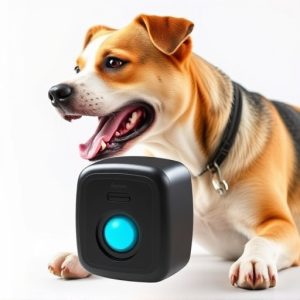Handheld Sonic Bark Control: Effective Ranges & Device Selection
Handheld sonic dog deterrents, using high-frequency inaudible sounds, offer a humane and effective s…….
Handheld sonic dog deterrents, using high-frequency inaudible sounds, offer a humane and effective solution for urban canine behavior management, especially excessive barking. Their success hinges on consistent usage by owners to train dogs to avoid specific areas or behaviors associated with the sound. Key considerations include sound intensity, frequency distribution (up to 20m range), and distance coverage, with advanced models offering adjustable settings for versatile use in various scenarios. Choosing a portable device with customizable reach can effectively control unwanted barking without causing harm.
“Unleash a quieter, more harmonious coexistence with your furry friends using Handheld Sonic Dog Deterrents—a revolutionary bark control solution. This article explores the effectiveness of these innovative devices, delving into how they utilize ultrasonic waves to deter excessive barking. We’ll navigate different frequency ranges and their impact on canine behavior. By understanding what works best for various scenarios, you can choose the ideal Handheld Sonic Dog Deterrent to address your pet’s barking issues effectively.”
- Understanding Handheld Sonic Dog Deterrents
- How Do These Devices Work?
- Evaluating Effectiveness Across Different Ranges
- Choosing the Right Bark Control Device for Your Needs
Understanding Handheld Sonic Dog Deterrents
Handheld sonic dog deterrents have gained popularity as a humane and effective way to control canine behavior, particularly in urban settings where traditional training methods may struggle. These devices emit high-frequency sound waves that are unpleasant to dogs but harmless to humans and other animals. The effectiveness of handheld sonic dog deterrents lies in their ability to startle or disorient the animal without causing pain or distress.
When used correctly, these devices can train dogs to associate certain areas or behaviors with an unpleasant sound, encouraging them to avoid those locations or stop engaging in unwanted actions. However, it’s crucial to note that while sonic deterrents are powerful tools, they require consistent and responsible use. Factors like the device’s range, frequency, and the dog’s individual sensitivity will impact its effectiveness, making it essential for owners to understand their product and adjust usage accordingly.
How Do These Devices Work?
These bark control devices operate on a simple yet effective principle. They emit a specific type of sound, typically in the ultrasonic range, which is inaudible to humans but can be heard by dogs. This sound acts as a deterrent, triggering a response similar to an instinctive startle reflex. When a dog barks excessively, the device’s sonic signal interrupts their behavior, effectively stopping the unwanted barking.
The handheld nature of these devices allows for easy and precise control. Users can aim the device at the dog and activate it when necessary. The sonic deterrent is non-invasive and harmless to the animal, making it a popular choice for pet owners seeking a humane solution to excessive dog barking. Its effectiveness has been well-documented, with many users reporting significant reductions in barking after consistent use.
Evaluating Effectiveness Across Different Ranges
When assessing the effectiveness of a handheld sonic dog deterrent across different ranges, it’s crucial to consider factors like sound intensity and frequency distribution. These devices emit high-frequency sounds that are typically inaudible to humans but can deter dogs through vibration. The key is to ensure the device projects consistently across various distances, maintaining enough power to reach the intended area without causing harm or discomfort to nearby humans or other animals not targeted for deterrence.
Studies have shown that handheld sonic dog deterrents can be highly effective within close ranges, typically up to 10-20 meters. However, their impact diminishes significantly beyond this distance due to signal attenuation. For more extensive areas, like backyards or parks, advanced models with adjustable settings and longer-range capabilities offer better solutions. These devices not only maintain effectiveness but also allow users to customize the intensity and frequency for optimal performance across different scenarios.
Choosing the Right Bark Control Device for Your Needs
Choosing the right bark control device is essential, and one option gaining popularity for its effectiveness is the handheld sonic dog deterrent. These devices emit a high-frequency sound that dogs find unpleasant, training them to associate certain environments or situations with this unpleasant sensation. The key to success lies in selecting a product that offers multiple range options, allowing you to customize the device’s reach according to your specific needs.
Whether you’re dealing with a small yard or a larger property, a versatile bark control device can be a game-changer. The handheld sonic deterrent is ideal for quick interventions during unwanted barking episodes, as it provides an immediate solution without causing harm. Its portability means you can easily carry it whenever you need to relocate, ensuring consistent training and deterrence across various locations.
Handheld sonic dog deterrents have proven effective in managing excessive barking through their ability to emit high-frequency sound waves. Evaluating their effectiveness across different ranges is crucial for choosing the right device for your needs. By understanding how these devices work and considering factors like environment and pet sensitivity, you can select a suitable handheld sonic dog deterrent that promotes calmness without causing harm. In terms of overall effectiveness, these devices offer a non-lethal, game-changing approach to barking control in today’s bustling urban landscapes.


